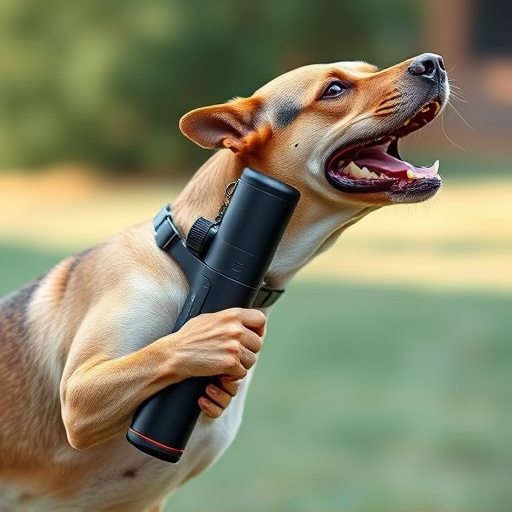Mace spray exposure can cause dogs discomfort, so immediate decontaminating a pet after mace exposure is crucial. Rinse affected areas with water and mild soap, focus on facial areas and paws, then gently dry. Monitor for severe reactions and seek veterinary care if needed. Regular decontamination practices and training can help prevent and manage mace spray incidents.
Mace spray, a powerful pepper spray designed for personal protection, can have severe effects on dogs when exposed. This article delves into understanding how mace spray interacts with canine physiology and its potential aftermath. We’ll guide you through essential steps to decontaminate your pet after exposure and offer preventive measures to avoid such incidents. Learn how to protect your dog from the harmful effects of mace spray and ensure their well-being.
- Understanding Mace Spray and Its Effects on Dogs
- Steps to Decontaminate Your Pet After Exposure
- Preventive Measures to Avoid Mace Spray Incidents with Your Dog
Understanding Mace Spray and Its Effects on Dogs
Mace spray, a type of pepper spray designed for law enforcement and personal defense, can have significant effects on dogs when they are exposed to it. Understanding how mace spray interacts with canine physiology is crucial in knowing how to decontaminate a pet after exposure. The active ingredient in mace spray, capsaicin, irritates the eyes, nose, and respiratory system, leading to symptoms such as tearing, sneezing, coughing, and difficulty breathing. These effects can range from mild discomfort to more severe reactions, especially in sensitive dogs or those with pre-existing respiratory conditions.
When a dog comes into contact with mace spray, it’s important to act quickly to decontaminate them. This process involves thoroughly rinsing the affected areas with large amounts of water to dilute and wash away any remaining spray. Additionally, creating a calm and quiet environment can aid in reducing stress and easing symptoms. If severe reactions occur, such as difficulty breathing or persistent irritation, seeking veterinary attention is essential to ensure the dog’s well-being and safe recovery.
Steps to Decontaminate Your Pet After Exposure
After your pet has been exposed to mace spray, decontaminating them promptly is crucial. Start by removing any contaminated clothing or accessories and rinse their fur thoroughly with warm water. Use a gentle shampoo designed for sensitive skin to clean their coat, ensuring you wash away any residual spray. Rinse again with clear water until all soap is eliminated to prevent irritation.
Once cleaned, wipe down your pet’s fur with a soft, damp cloth to remove any remaining moisture and spray residue. Pay extra attention to facial areas, paws, and any other sensitive spots. Dry them gently using a clean towel. If possible, seek veterinary care immediately to monitor for any adverse reactions or long-term effects of mace exposure on your pet’s health.
Preventive Measures to Avoid Mace Spray Incidents with Your Dog
To prevent mace spray incidents with your dog, it’s crucial to understand how they can occur and take proactive steps. Dogs may accidentally come into contact with mace spray during walks or while playing outdoors, especially if they are sensitive to strong odors or have a history of fear or aggression towards unfamiliar stimuli. Regularly checking your surroundings for potential hazards and keeping your dog on a secure leash in public spaces can significantly reduce the risk. Additionally, ensuring your dog is well-trained and socialized can help manage their reactions to unexpected events.
If your dog does come into contact with mace spray, immediate decontaminating steps are essential. Rinse the affected area thoroughly with water to remove any residual spray. Use a mild soap to gently clean their fur and skin, paying close attention to the face, paws, and areas where the spray might have been absorbed. After decontamination, monitor your dog for any adverse reactions and consult a veterinarian if necessary. Regular decontaminating practices after outdoor activities can further protect your pet from potential mace spray exposure.
Mace spray can pose a significant risk to dogs, but with proper understanding and preventive measures, pet owners can protect their four-legged friends. By knowing the effects of mace on dogs and following decontamination steps if exposure occurs, you can ensure your pet’s safety. Regularly reviewing these practices and implementing preventative measures will significantly reduce the chances of your dog encountering mace spray in the first place. Remember, a well-informed and proactive owner is key to keeping their dog happy, healthy, and secure.
